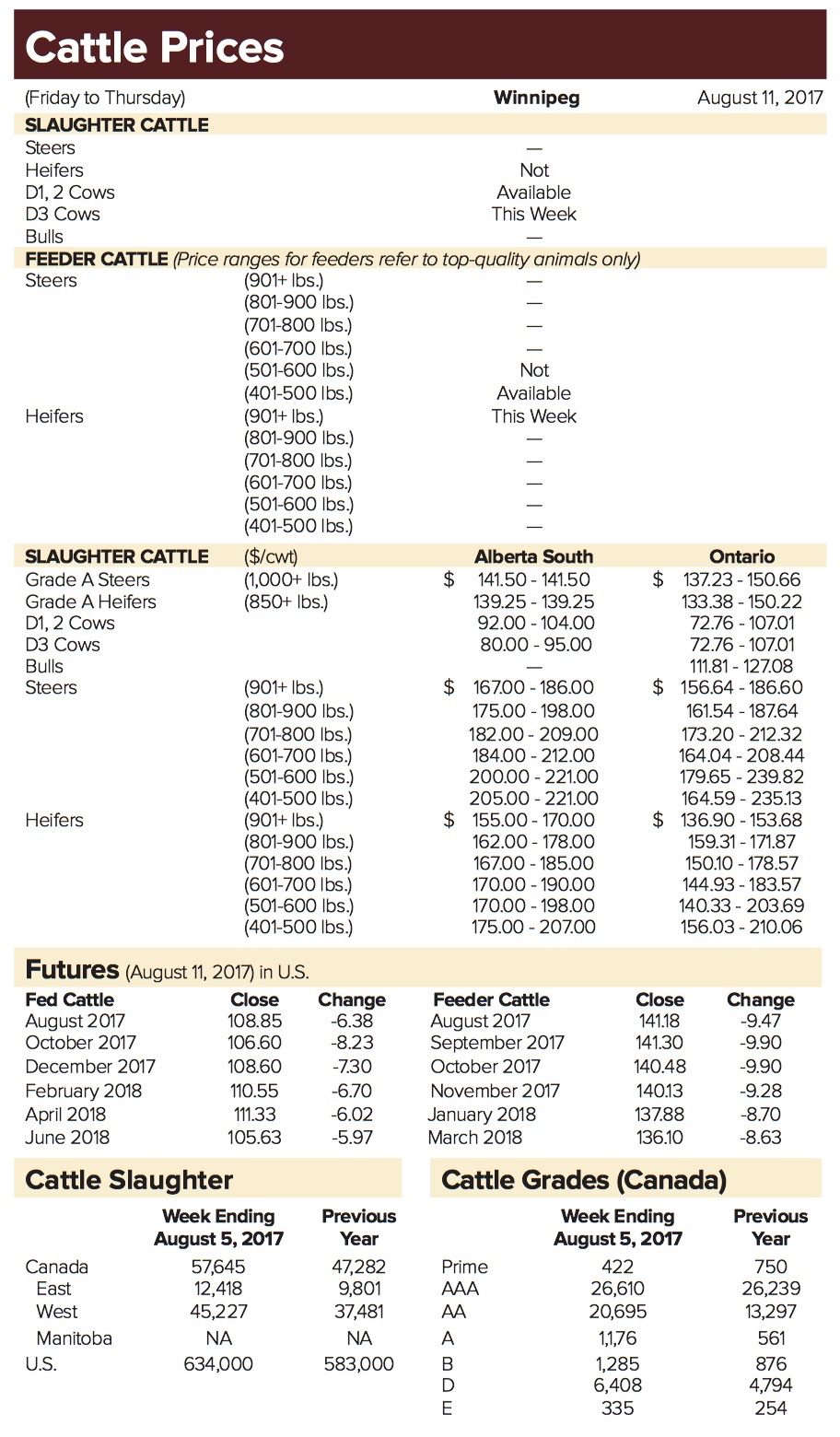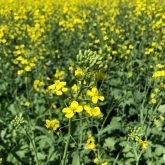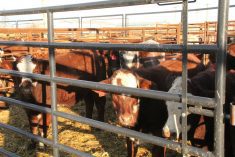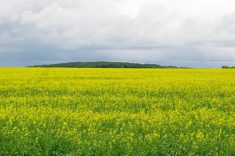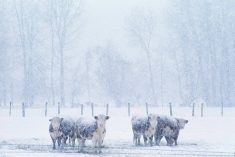Cattle markets are going through seasonal doldrums as large numbers of fed cattle are weighing down prices.
Brian Perillat, a senior analyst at Canfax, the Canadian Cattlemen’s Association’s market information firm, said fed cattle have been under pressure since the price fall-off this spring.
“The U.S. and Canada, we’re killing as many cattle as we have for several years and keeping kind of a lid on prices. We’re actually pushing into some of the lowest prices of the year right now.”
Read Also

Canadian canola prices hinge on rain forecast
Canola markets took a good hit during the week ending July 11, 2025, on the thought that the Canadian crop will yield well despite dry weather.
Current prices for fed cattle are about $1.40 per pound, he said.
Cull cows are also under pressure, selling for less than $1, down 12 to 13 cents from their highs this spring.
In Brandon, Keith Cleaver of Heartland Livestock Services said the facility’s Aug. 8 sale saw steady prices with good interest.
On the slaughter side, he said, cow prices were fully steady to slightly higher and feeders were also steady to “a titch” higher than a few weeks ago.
“The cows were in the 90 (cents) to $1 range. The higher-yielding cows were very close to a dollar,” he said.
Yearling steers (700-750 lbs.) were attracting bids of up to $2.09/lb. “That’s livable.”
Those prices may not seem overly high compared to prices producers were seeing at the peak of the rally this spring, or compared to the strong market of a couple of years ago, but Perillat agreed it’s not bad historically.
“But any time you’re over two bucks, it’s still a pretty good price for steers and calves,” he said.
Perillat added he expected that younger calves would be hitting markets early because dry conditions in southern areas of Saskatchewan and Alberta would force producers to thin their herds, but so far that hasn’t happened.
“There’s a few more — a few yearlings moving in, but not much. Those numbers are pretty limited, actually surprising given how big an area that is quite dry,” he said.
Markets may start seeing more calves in September as grass dries up, he added.
“We expect a bit of an earlier fall run.”
Manitoba producers appear to have escaped the worst conditions faced by producers in Alberta and Saskatchewan, Cleaver said, although some areas could use more moisture.
“Pastures were a concern for some, but we got some rain last week and more today (Aug. 9). Hopefully, that will keep the grass growing,” he said.
He said he expected more feeder cattle to start moving soon and activity to pick up generally in the next few weeks.






